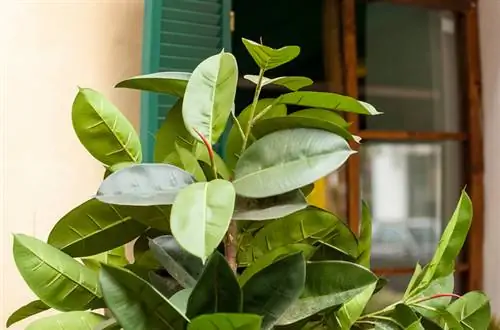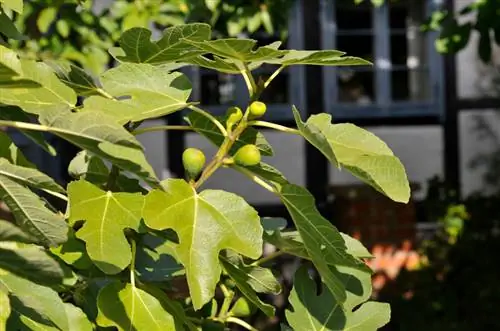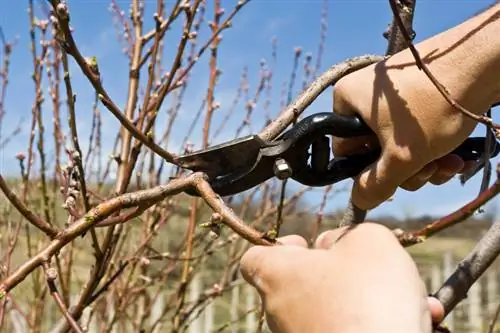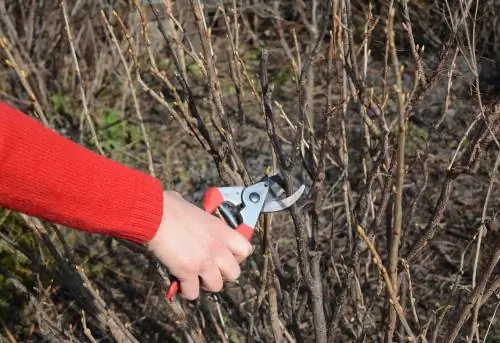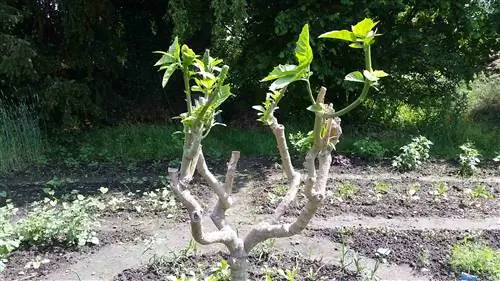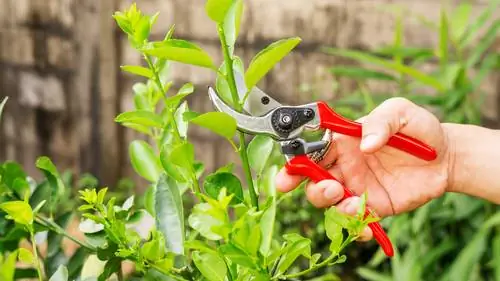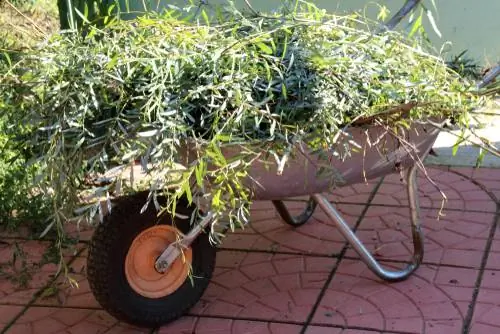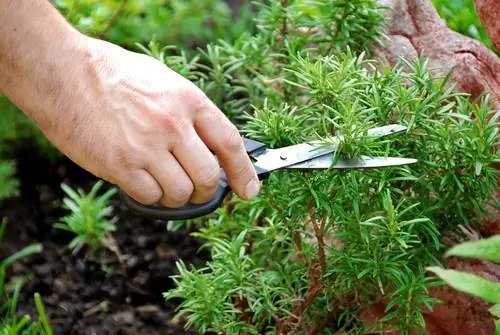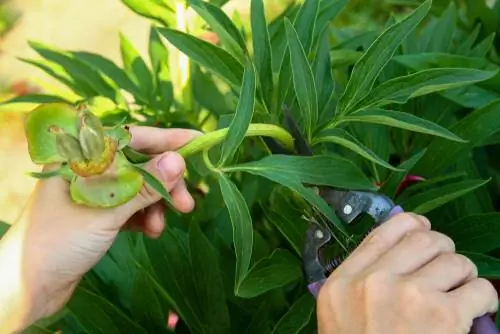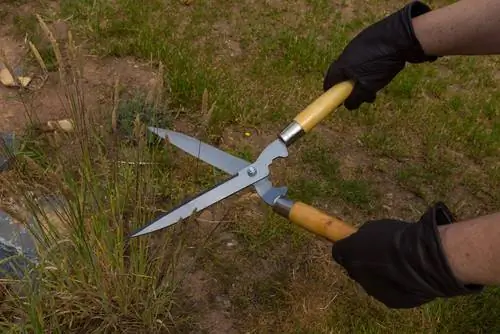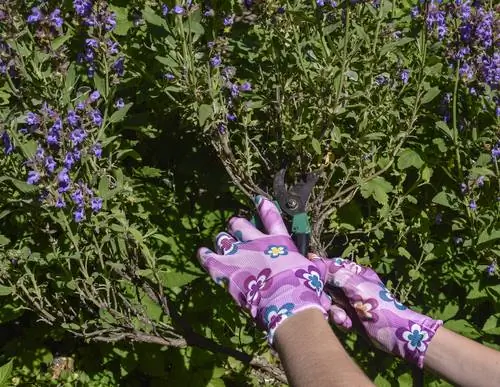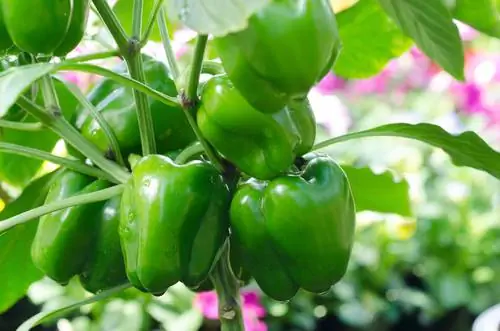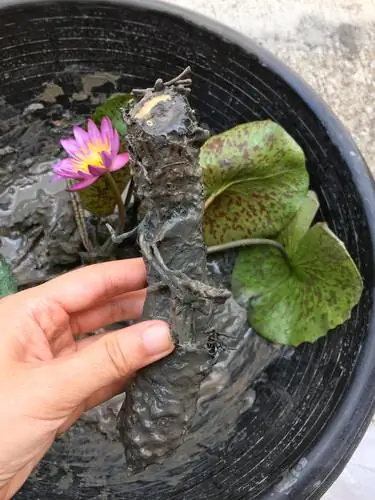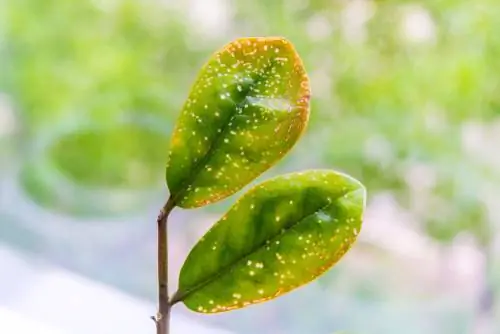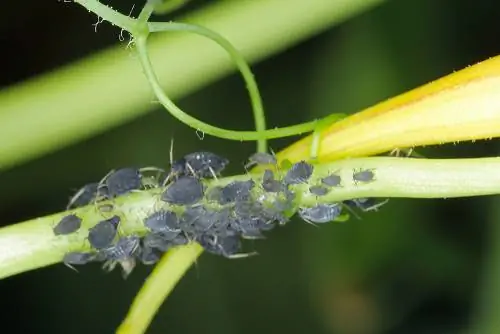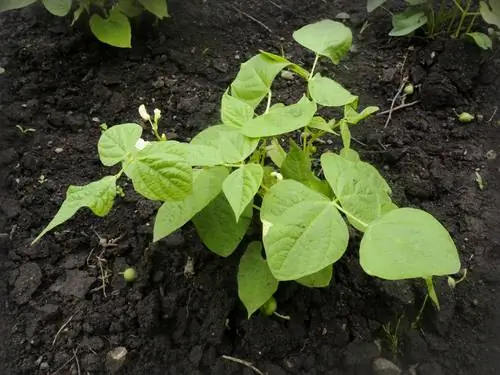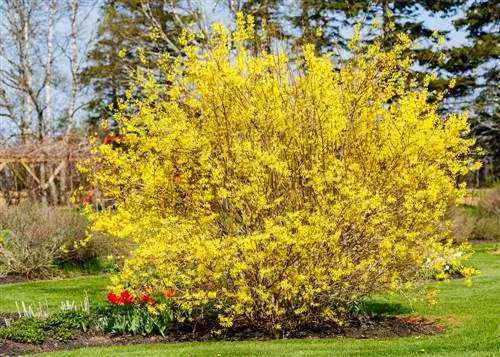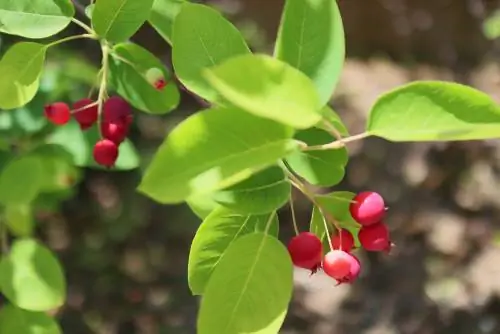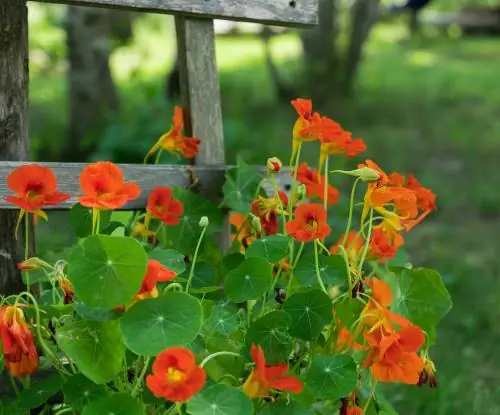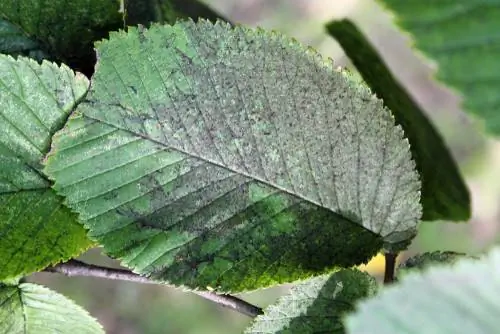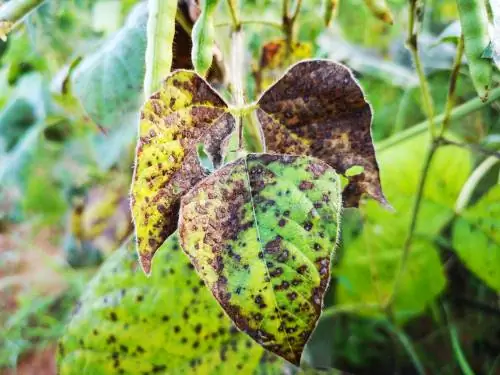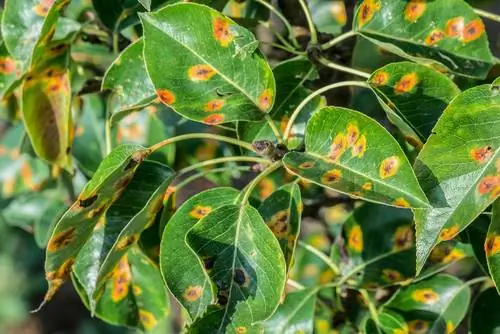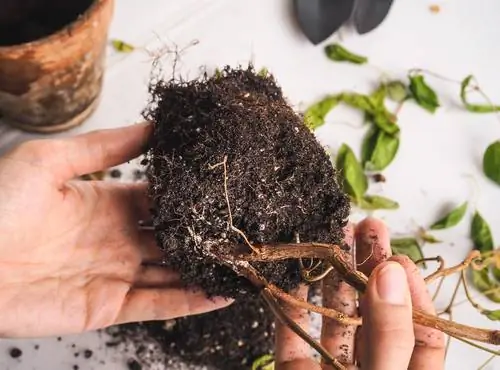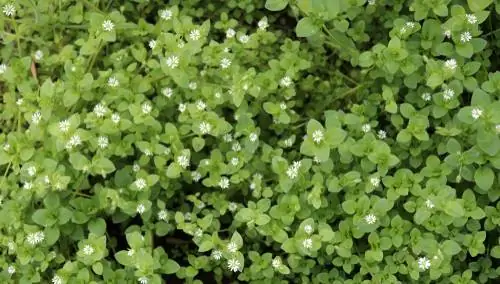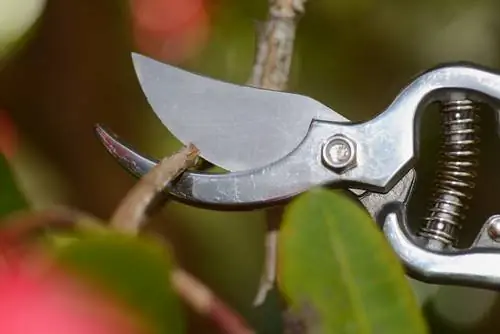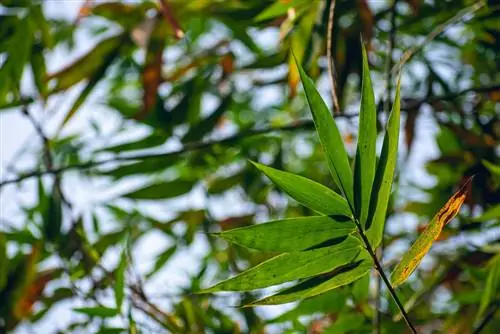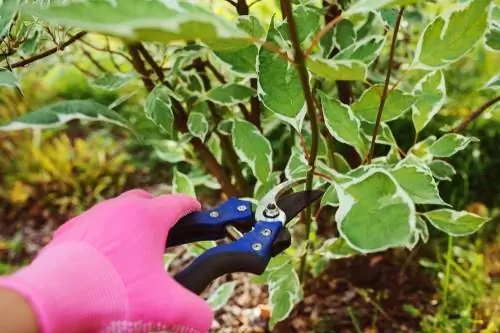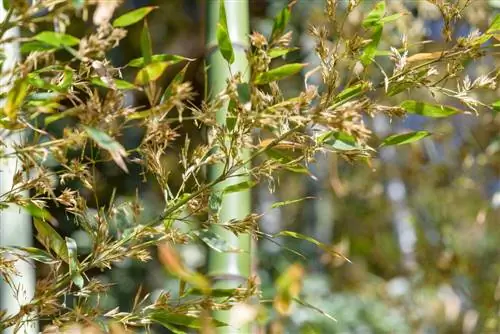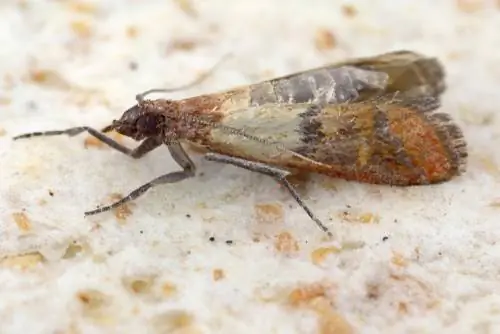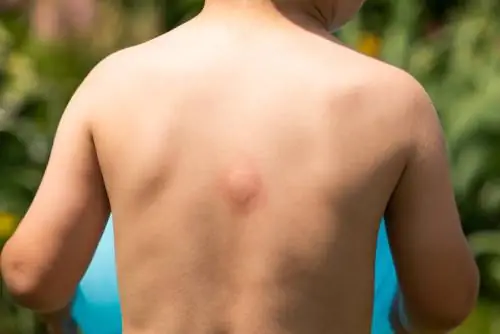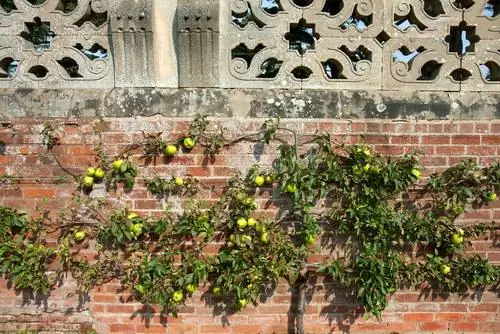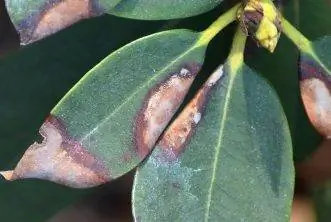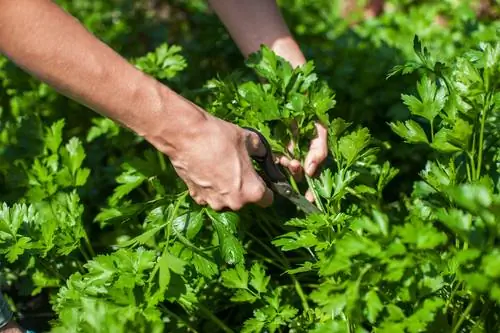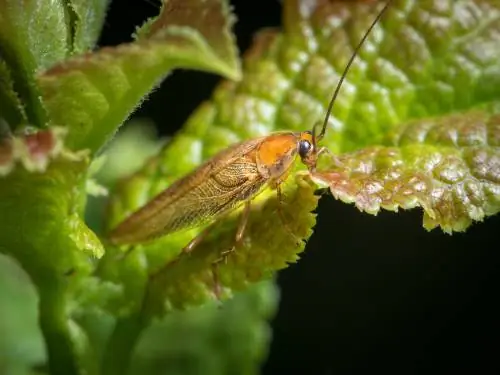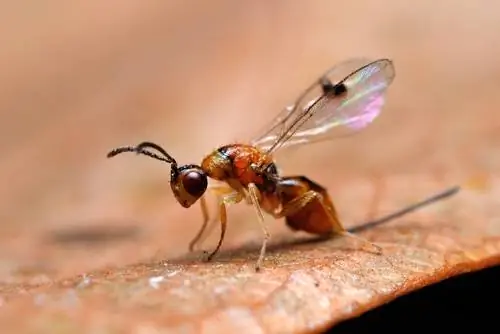Plant species
Last modified: 2025-01-23 11:01
Cutting keeps growth in check on the rubber tree and stimulates branching. - Read here when and how to properly cut Ficus elastica
Last modified: 2025-06-01 06:06
In this tutorial you can read how to properly prune your fig tree. This is how you can extract valuable fruit wood with a skillful cut
Last modified: 2025-06-01 06:06
Rich kiwi harvest depends on the right cut. - Read this tutorial on when and how to cut kiwis in an exemplary manner
Last modified: 2025-06-01 06:06
Don't worry about cutting the peach tree. - Read this tutorial for a well-founded guide with practical tips & tricks
Last modified: 2025-01-23 11:01
How do I cut black currants correctly? - Read all the important cutting instructions for Ribes nigrum in this tutorial
Last modified: 2025-06-01 06:06
This is how you prune a trumpet tree in an exemplary manner. - Read this tutorial on when and how to properly prune Catalpa bignonioides
Last modified: 2025-01-23 11:01
Should you prune a lemon tree or not? - Read here why an occasional cut is beneficial. - How to cut correctly
Last modified: 2025-06-01 06:06
This is how you prune your pasture in an exemplary manner. - Instructions for the perfect pruning of the most beautiful willows in the tutorial. - Lots of tips & tricks
Last modified: 2025-01-23 11:01
Cutting rosemary for harvest only partially covers the pruning care. - Read here when and how to cut the herb plant correctly
Last modified: 2025-06-01 06:06
Bamboo pruning care explained clearly. - Read this tutorial on when and how to properly cut bamboo. - Tips & Tricks for beginners
Last modified: 2025-06-01 06:06
There are striking differences to consider when cutting peonies. - Read this tutorial about when and how to properly prune peonies
Last modified: 2025-06-01 06:06
Pumpkin has many reasons for cutting. - Read this tutorial for practical instructions on when and how to cut pumpkin in an exemplary manner
Last modified: 2025-01-23 11:01
Grasses benefit from annual pruning care. - Read this tutorial on when and how to properly cut ornamental grasses
Last modified: 2025-06-01 06:06
Sage wants a species-appropriate cut. - Read here when and how to properly cut spice sage and flower sage
Last modified: 2025-06-01 06:06
Cutting peppers as a plant and finished fruit. - Read practical instructions about pruning care in this tutorial
Last modified: 2025-01-23 11:01
This compact guide explains how growing aquatic plants from seeds works in simple step-by-step instructions
Last modified: 2025-01-23 11:01
Spots on rubber trees are immediately noticeable. We'll tell you when leaf spot disease occurs and what you need to do as quickly as possible
Last modified: 2025-01-23 11:01
Aphids often spread on young bean plants. Find out here 5 home remedies that can be used to combat aphids on beans
Last modified: 2025-01-23 11:01
Beans from your own garden are delicious. Learn how to grow your beans step by step in our guide
Last modified: 2025-01-23 11:01
Want to pile up your beans? Find out here when, why and how to do it and what alternatives there are
Last modified: 2025-01-23 11:01
In this article we would like to introduce you to forsythia. You will also find valuable care tips here
Last modified: 2025-01-23 11:01
The rock pear is a vigorous, larger shrub that produces numerous flowers and edible fruits and also has a high decorative value
Last modified: 2025-06-01 06:06
The nasturtium is an easy-to-care for, richly flowering & fast-growing plant for the flower bed & for the balcony. Leaves & Flowers are edible
Last modified: 2025-01-23 11:01
Sooty mold covers plant leaves with a black coating. We will explain to you what attracted the fungus and how the plaque can be removed quickly
Last modified: 2025-01-23 11:01
Brown spots on beans almost always indicate focal spot disease. Find out here how to react correctly in the event of an infestation
Last modified: 2025-01-23 11:01
Leaf spot destroys the beauty of plants. We'll tell you whether home remedies have any power against them and give you some tips
Last modified: 2025-01-23 11:01
Root rot is a serious problem. We will explain to you what control options are available so that the plant can heal again
Last modified: 2025-06-01 06:06
The wonderful, edible chickweed is not welcome everywhere. We will explain to you which methods you can use to distribute them in an environmentally friendly way
Last modified: 2025-06-01 06:06
Eggplants are a great summer vegetable. In this article you will find tasty recipes that are easy to cook
Last modified: 2025-06-01 06:06
Are you unsure about pruning your rhododendron? Dive deeper into this tutorial. Learn here when and how to cut rhododendrons correctly
Last modified: 2025-06-01 06:06
Why are brown leaves on bamboo not a good sign? What could be the underlying causes and how can you specifically prevent brown leaves?
Last modified: 2025-06-01 06:06
Don't worry any longer about how to properly prune dogwood bushes. - Tutorial for skillfully pruning important dogwood species
Last modified: 2025-01-23 11:01
What do the flowers of the bamboo look like? When do they appear and what happens immediately after flowering? Get an insight here
Last modified: 2025-01-23 11:01
Dried fruit moths are annoying food pests. Read about how the butterflies live and what helps prevent them from spreading
Last modified: 2025-06-01 06:06
A bumblebee sting is very rare, as the fat bumblebees are peaceful animals and rarely sting. Here's how to treat such a sting
Last modified: 2025-01-23 11:01
Peach trees are wonderful as espalier fruit. We will explain to you where he delivers sweet fruit and what else is important
Last modified: 2025-01-23 11:01
Leaf spot disfigures the leaves of rhododendrons. We will explain to you how to recognize the disease by the symptoms and what to do
Last modified: 2025-01-23 11:01
Parsley leaves are sometimes covered in spots. We will explain to you whether they remain edible and what you can do about leaf spot
Last modified: 2025-01-23 11:01
Amber cockroaches give you goosebumps. Read everything about lifestyle and food here - with tips for a balanced life with forest cockroaches
Last modified: 2025-01-23 11:01
Gall wasps are more harmless than many people think. We will enlighten you and give you an insight into the exciting lifestyle of these herbivorous insects

